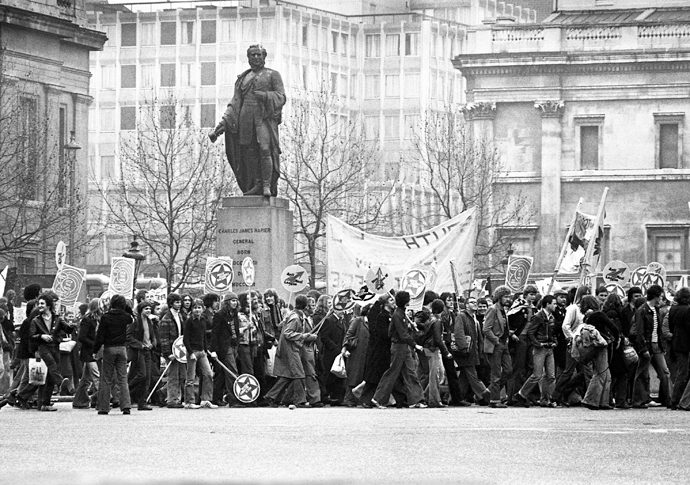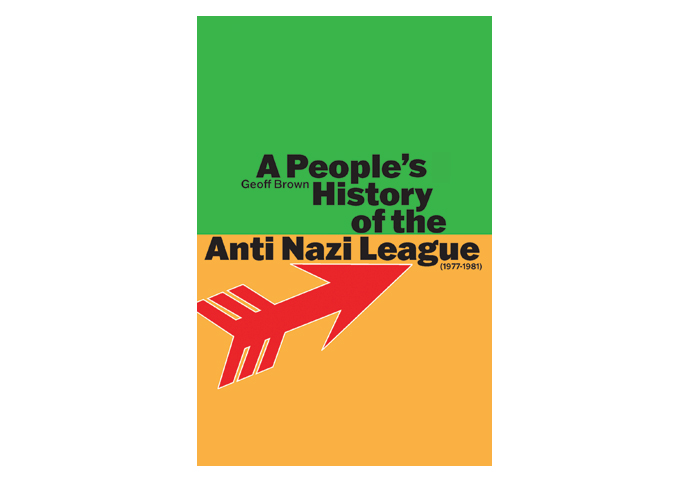The right stuffed: timely Anti-Nazi League history offers an essential lesson
A holiday read and the recent Tommy Robinson-fuelled far-right march sparks some personal memories for Matt Foot
Friday, 26th September 2025 — By Matt Foot

The Rock Against Racism march in 1978 [Sarah Wyld]
SATURDAY, September 13 saw the biggest far-right mobilisation in British history. It was called by Tommy Robinson a former member of the fascist British National Party (BNP), who once described Muslim babies as “time bombs”.
To have well over 100,000 flag-waving supporters of Robinson on the streets is a serious warning to all democrats and anti-racists. As I stood on the Stand Up to Racism protest that day, kettled in Whitehall for several hours, surrounded by marauding flag-shaggers, I took some small solace from a recent holiday read – A People’s History of the Anti-Nazi League (1977-1981) by Geoff Brown.
Brown’s history confirmed the great success of the ANL (alongside Rock Against Racism) in defeating the fascist National Front in the 1970s. This first comprehensive history of the ANL could not be more timely.
The International Socialists who inspired the founders of the Anti-Nazi League drew upon Trotsky’s writings on the United Front, where he identified the potential to draw together the anti-fascist majority to confront the threat of fascism. The failure to do so in Germany in the 1930s had catastrophic results leaving “the road open for the Nazis to march to power”. The ANL drew together the far left and elements within the Labour Party, including Peter Hain, who had led a brilliant anti-racist campaign against the all-white South African cricket team’s tour. Differences were put aside in favour of urgent unified action to confront the fascist threat.
The threat was very real. In the summer of 1976 Gurdip Singh Chaggar had been murdered by racists in Southall.
The ANL took off. They obtained the support of football managers Brian Clough and Jack Charlton, and a myriad of groups were set up including Women, Gays, Railworkers and Schoolkids Against the Nazis (SKAN). The book highlights vividly the way in which the ANL worked together with unions to isolate fascists in the workplace. This was a fertile area for support.

For instance, in 1975 when management of the Camden Journal (the New Journal’s predecessor) insisted on including an advert for the National Front, six NUJ members stopped working.
On May Day 1977, the ANL’s sister organisation Rock Against Racism’s first big gig was held at The Roundhouse in Chalk Farm – 1,500 people attended. One of the organisers, Red Saunders, describes how: “We had huge f***-off banners made of the brightest psychedelic material with our slogan ‘Love Music, Hate Racism’ stencilled in big letters, all hand-made to a high standard. The whole of the Roundhouse was covered.
“At the end of the night history was made with the reggae band Aswad jamming with Carol [Grimes] and about 20 other musicians.”
The money raised was given to the Right to Work Campaign and the Islington 18 Defence Committee (a campaign on behalf of 18 black youths prosecuted for conspiracy to rob, who were later acquitted at trial of the conspiracy).
Geoff Brown was the organiser for the ANL in Manchester at the time. He explains how initiatives from the bottom up changed the discourse: “But there was a problem – you have the publicity, but have you got the people on the ground?
“It’s a huge job of work to make sure it does take off. People go around talking to local anti-racist and anti-fascist committees saying: ‘We are not trying to replace you, we are trying to work with you because we don’t have a national organisation for what is a national task’.”
Sometimes initiatives didn’t work, or the fascists gained ground but the momentum for unity and the League’s endless initiatives kept growing. In Camden the ANL got people to picket a local butchers where an NF member had been threatening black customers and ANL badge wearers.
My memories of the ANL growing up in Camden were very formative. I was very proud that the ANL was set up in our front room, as my dad – journalist Paul Foot – was a leading member of the International Socialists.
When Spurs Against the Nazis set up a five-a-side football competition, our family put in a team with Peter Cook in goal (we didn’t win). Other memories include seeing the Clash and the Tom Robinson Band at the RAR Carnival in Victoria Park and being part of SKAN and going on the ANL protests with school mates, with the iconic ANL lollipop placards, and plastering the ANL stickers. I didn’t realise at the time, but the big cage behind our front door that clanged every time it closed, was there on the advice of the police to catch any firebombs placed by fascists.
This book is far more than a nostalgic historical account, it is an essential lesson in how people successfully came together to unite and beat back the fascists. I urge you to read it but also apply it.
• A People’s History of the Anti Nazi League (1977-1981). By Geoff Brown, £12. Available online or from Bookmarks bookshop.
• Matt Foot is co-author of Charged – How the Police Try to Suppress Protest.